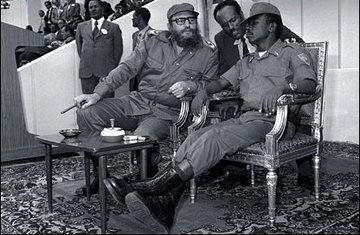
With help from Cuba by the end of the 1970s Mengistu
presided over the second largest army in sub-Saharan Africa.
Photo by Shemelis Desta (BBC)
By Rebekah N. Kebede
Editor’s Note: In 1979, under Lieutenant Colonel Mengistu Haile-Mariam, the Ethiopian government sent thousands of Ethiopian children to Cuba to be educated. Cuba, an ally of Ethiopia in the Ethio-Somali war, offered housing and education for war orphans. The Cuban government accepted 2,400 Ethiopian students, aged seven to fourteen, to study at Escuelas Secundarias Basicas en el Campo (basic rural secondary schools) – on the small island of Isla de la Juventud.
Photographer Aida Muluneh is filming a documentary, The Unhealing Wound, about their lives in Cuba. Earlier this year, Tadias interviewed her about the film.
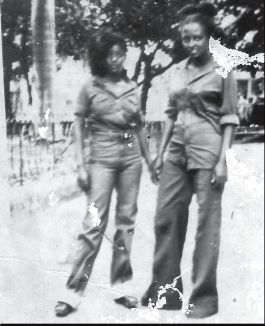
Above: Teenage Ethiopian Girls in Cuba
TADIAS: How did you become interested in the “Ethio-Cuban” story?
AIDA: I went to a group photo exhibit in Havana in 2003 and prior to my trip I had heard about the Ethiopian students in Cuba. After searching for them, I finally met around 30 students who had been in Cuba for over twenty years. It was an amazing experience meeting these fellow Ethiopians. I soon realized that I had to come back. So in 2004, I went back and begun interviewing them to start telling their story and also to help them get out of Cuba.
TADIAS: Why haven’t they left Cuba? And why haven’t they returned to Ethiopia?
AIDA: They have had the opportunity to leave Cuba and return to Ethiopia; however they have no means of supporting themselves in a country they left twenty years ago. There is no incentive for them to go back to Ethiopia and resettle because life would be just as difficult, if not worse in Ethiopia. As for other countries i.e. Europe or North America, the remaining student just recently qualified for their UN refugee number. This basically means that they can get in line for a chance to immigrate to those countries.
TADIAS:This was a coordinated effort between the Cuban and Ethiopian governments. What efforts did Cuba make to help Ethiopian immigrants adjust to Cuba?
AIDA: The Cuban government has been extremely supportive within their means from day one. Even prior to the students arriving, Cuba played an instrumental role in helping Ethiopia during the Ethio-Somlia war. Therefore, upon the student’s arrival, the children were given the basic necessities in order to become acquainted with life in Cuba. One thing that needs to be put into perspective is that as a young child, it is difficult to adjust to any place that is foreign, especially when one is so far away from home. The Ethiopians expressed to me that as children they had missed their country more then anything and I believe this yearning to return is what made it extremely difficult for many. The Cubans have gone above and beyond in providing support to the Ethiopians to this day.
TADIAS: Although The Unhealing Wound focuses on those Ethio-Cubans still in Cuba, I understand there have been a number who have managed to leave Cuba and live elsewhere. When did they leave and where do they live now?
AIDA: In addition to providing primary education, the Cubans have also educated University students during this time period. For many of the Ethiopian students who attended universities in Cuba they have managed to return back to Ethiopia and find viable means of supporting themselves. In fact during the Derg period, many of the students that completed their education were given housing and job opportunities upon their return to Ethiopia. However, after the fall of the Derg government, many of the students felt that returning back to Ethiopia would lead to further economic hardship. In 1991, the Soviet Block fell and many of the students begun leaving to countries such as Spain, Greece, Holland, U.S., etc. I am not exactly sure how many returned to Ethiopia and how many went to other destinations. My assumption is that the greatest number of Ethiopian-Cubans are in Spain.
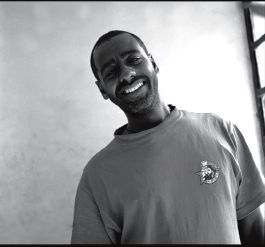
Above: Aredo. Photo by Aida Muluneh
TADIAS: Is there a network of Ethio-Cubans abroad that help others still in Cuba to immigrate to other countries?
AIDA: As far as I know, there is no organized effort by Ethio-Cubans that continuously assists the Ethiopians to leave Cuba and resettle to a third country. Although it is a tightly knit community in Cuba, once abroad, it’s more so through the efforts of individuals helping new comers than an established network.
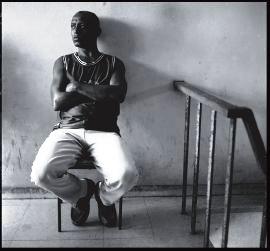
Above: Motbaynor. Photo by Aida Muluneh
TADIAS: What kind of relationship do Ethio-Cubans have with Cuba? Do they identify in any way as Cubans?
AIDA: From my observation of the Ethio-Cubans, there is a special relationship between the Cubans and these Ethiopians. It is clear that they still identify themselves as Ethiopians but they have fully taken on Cuban mannerisms and cultural habits in the ways they interact with others and express themselves.
TADIAS: You mentioned that many Ethio-Cubans faced challenges in adjusting to their new environment when they moved to Cuba. What were some of those challenges?
AIDA: The challenges were similar as any immigrant faces when they arrive to a new country, but imagine that through the eyes of a ten year old. The first problem that they had was the climate. The temperature was a big issue. They were moving from the highlands of Ethiopia to a tropical island. The second was the food. The food in Cuba consisted of pork, rice and beans in contrast to eating Injera their whole life. Then, of course, language and homesickness were major issues.
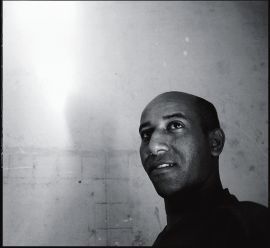
Above: Teddy. Photo by Aida Muluneh
TADIAS: You left Ethiopia as a child as well. Is there a relationship between your interest in the Ethiopian students in Cuba and your own experience?
AIDA: There was definitely a relationship to my life. I went to boarding school at a young age in Cyprus away from my family. One of the things that attracted me to the whole story and enabled me to empathize with them was the struggle I faced as a child who felt alone in a foreign land.
TADIAS: Does the Ethio-Cuban story fit into the themes that you address in your photography work?
AIDA: My beginning as an artist is in photojournalism and this story at first was supposed to be a series of photographs about these Ethiopians. However, I decided that their story was too compelling to be told solely in still photography. The Unhealing Wound is an exploration of themes that captivate me as a photographer and a filmmaker. It all comes down to capturing life and in this case it is capturing our past history and also documenting the history as it is happening. I hope that thirty years from now, anyone can look back at this film and have a better understanding of our struggles, triumphs and sacrifices as Ethiopians in the landscape of the immigrant life.
TADIAS: What is the current status of the film?
AIDA: We are hoping to release the film in the spring of 2008. I am currently in the process of collecting more interviews and archival materials to complete the story. Most recently The Unhealing Wound received fiscal sponsorship from IFP, an organization that is in the forefront of providing support for independent filmmakers to cultivate their artistic endeavors.
Find out more about The Unhealing Wound at pastforwardfilms.com.
***
Editor’s Picks: The Colors of Ethiopians: Where are you from?
******************************
How to Advertise
To learn about advertising, Click Here.
******************************





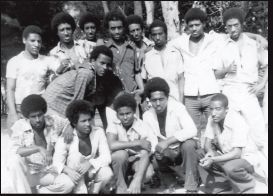
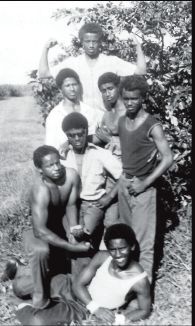
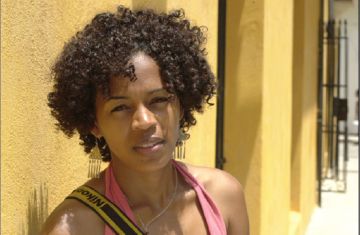





















Congratulations to all in Tadias and Liben for the exclusive story of Ethio-Cubans. You have raised the bar in covering with a sense of true journalism among the Diaspora-media. Hope others will follow.
Good job Aida, for bringing this extraordinary and compelling story into the limelight.
“Mengedun Chark Yargilish…”!
Bless
Nobel in Hollywood, CA
Thank you so much for sharing a story unknown o most of the world. God bless:)
Dear,
I would like you to assist me in finding my family member in Cuba and make contact. His name is Legase Haailu and his sister.
selam Filmmaker Aida Muluneh, If you reply for my e-mail, I wish to contact you as soon as possible
This was one of the most heart touching story and you have revealed the uknown secreat of your people, this will help many Ethiopians to relaize the pain and suffering of their brothers and sisters who are leaving under the subjugation of another country. I woud like to thank you for revealing this story to the world.
I just stumbled upon this site and this story caught my attention immediately.
I was one of over 1000 kids from Ghana who also went to Cuba at tender ages to pursue a better education and future. We lived on the same island (Isle of Youth or ‘Isla de la Juventud’) as the Ethipians. Our school (ESBEC #22), was very close to one of the Ethiopian schools (ESBEC #21). We share the same story. It is a fascinating story that invokes a lot of mixed emotions and memories. From the separation from our families in hopes of a better future, through the struggles of adaptation to a foreign land, food and culture and ultimately to the confusion of where to call home and the long process of finally leaving Cuba and resettling in our countries or elsewhere.There were kids from all over Africa, Latin America and even Korea on the Isle of Youth.
My story was briefly featured on the Oprah Winfrey show in October of 2002 and I am glad you are filming a documentary about our Ethiopian friends. If I can be of any help, let me know. Our website is http://www.esbec.com . We still maintain our little community and hopefully, one day, our story will also be told.
Enkuandesalish (Congrats!)Aida,
I,m really surprise and exited to have known that a film is going to be made about something I experienced vividly myself though in my case it’s from a Ghanaian perspective.I studied in cuba as a teenager too.thumbs up for your interest!!!
I am touched by the lives of my brothers and sisters who reside in Cuba. More than 20, years it a long time to stay with out going back home and these young ones will have a problem to either be a Cubian or mix with Ethiopian age mates. Some have left before knowing their culture. I cannot wait to see the docmentary film. May God lead them where they can be comfortable.